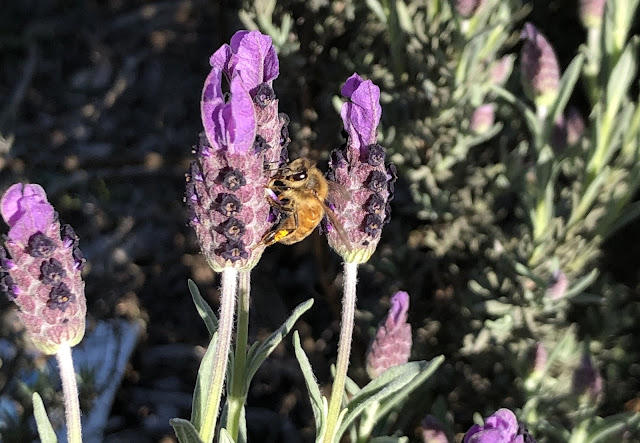
May 7 celebration salutes bees and other pollinators

|
|
Hard-working honey bees and their product are celebrated this Saturday at the
California Honey Festival in Woodland. (Photo: Kathy Morrison)
|
This event is guaranteed to be a sweet time: The California Honey Festival.
Woodland’s Main Street will be buzzing Saturday, May 7, during this celebration of honey bees and other pollinators and their wonderful creation. Discover the many flavors of honey (not all honeys are sweet!) as well as its multitude of uses. Also, learn how you can help bees and other beneficial insects in your own landscape.
There will be bee-friendly activities for the whole family, say organizers. “We strive to create an event experience that inspires people of all ages to protect and celebrate bees and other pollinators.”
Scores of vendors will offer honey-laced items as well as other products that depend on bees (such as almonds). There will be plenty of food as well as live entertainment. Another plus: Most of the honey is California-sourced.
Dedicated to honey appreciation and pollinator education, the California Honey Festival is a partner with the Honey and Pollination Center at the Robert Mondavi Institute, UC Davis. Woodland is recognized as a Bee City USA by the Xerxes Society for its support of pollinators.
Bees pollinate an estimated 80% of all flowers. More than 100 California crops depend on bees for pollination.
Festival hours are 10 a.m. to 5 p.m. Saturday. Admission is free. The festival will fill the historic Main Street area in downtown Woodland with parking available. No pets, please.
For details, list of vendors and directions: https://californiahoneyfestival.com/ .
Comments
0 comments have been posted.Sacramento Digs Gardening to your inbox.
Sites We Like
Garden Checklist for week of April 21
This week there’s plenty to keep gardeners busy. With no rain in the immediate forecast, remember to irrigate any new transplants.
* Weed, weed, weed! Get them before they flower and go to seed.
* April is the last chance to plant citrus trees such as dwarf orange, lemon and kumquat. These trees also look good in landscaping and provide fresh fruit in winter.
* Smell orange blossoms? Feed citrus trees with a low dose of balanced fertilizer (such as 10-10-10) during bloom to help set fruit. Keep an eye out for ants.
* Apply slow-release fertilizer to the lawn.
* Thoroughly clean debris from the bottom of outdoor ponds or fountains.
* Spring brings a flush of rapid growth, and that means your garden is really hungry. Feed shrubs and trees with a slow-release fertilizer. Or mulch with a 1-inch layer of compost.
* Azaleas and camellias looking a little yellow? If leaves are turning yellow between the veins, give them a boost with chelated iron.
* Trim dead flowers but not leaves from spring-flowering bulbs such as daffodils and tulips. Those leaves gather energy to create next year's flowers. Also, give the bulbs a fertilizer boost after bloom.
* Pinch chrysanthemums back to 12 inches for fall flowers. Cut old stems to the ground.
* Mulch around plants to conserve moisture and control weeds.
* From seed, plant beans, beets, cantaloupes, carrots, corn, cucumbers, melons, radishes and squash.
* Plant onion sets.
* In the flower garden, plant seeds for asters, cosmos, celosia, marigolds, salvia, sunflowers and zinnias.
* Transplant petunias, zinnias, geraniums and other summer bloomers.
* Plant perennials and dahlia tubers for summer bloom.
* Mid to late April is about the last chance to plant summer bulbs, such as gladiolus and tuberous begonias.
* Transplant lettuce seedlings. Choose varieties that mature quickly such as loose leaf.